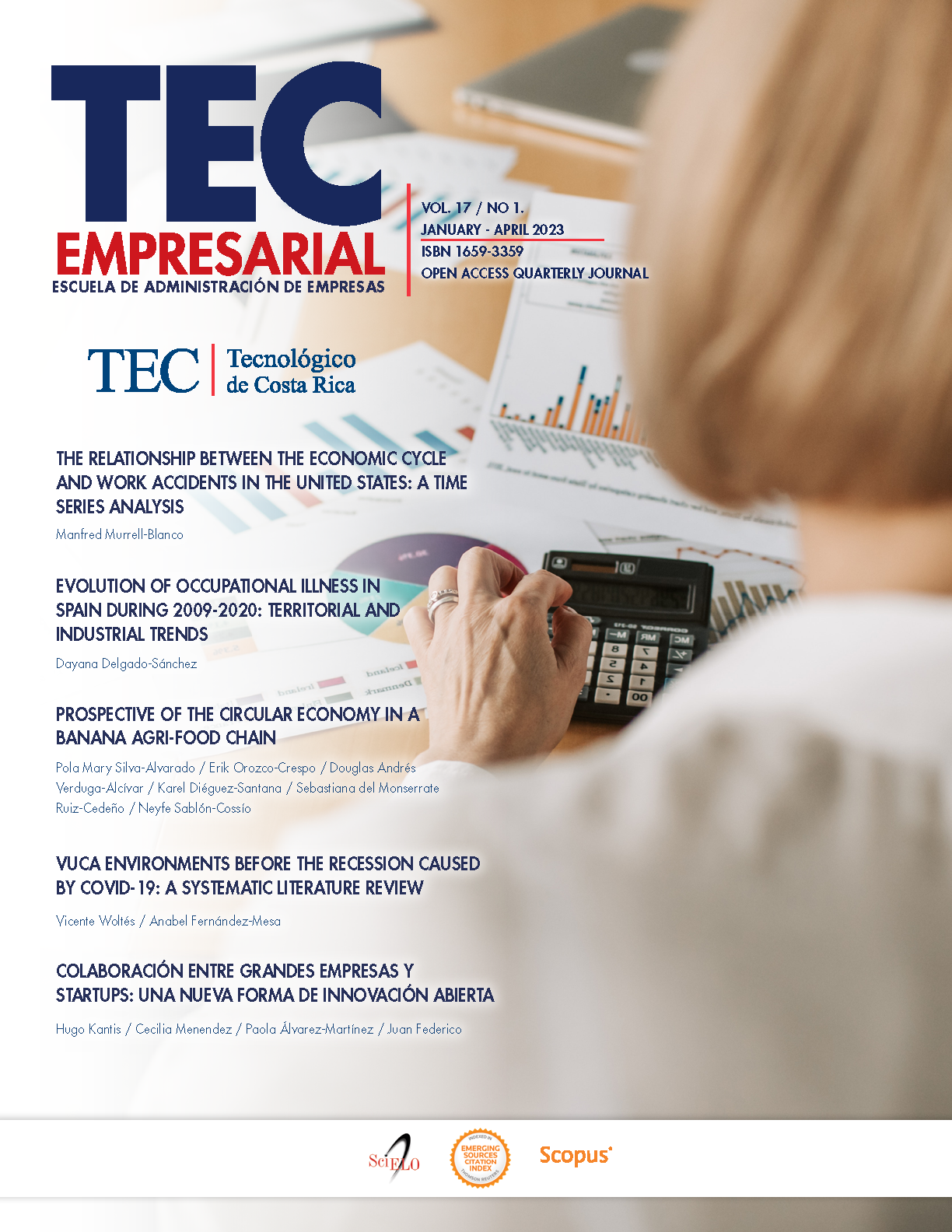The relationship between the economic cycle and work accidents in the United States: A time series analysis
Main Article Content
Abstract
This study analyzes the relationship between the economic cycle and work accidents in the United States. The empirical strategy is based on vector autoregression models (VAR) for time series and panel-data settings on a sample of 40 US States during 2003-2018. The results confirm a bidirectional causal relationship in the short-run between economic activity—i.e., Gross Domestic Product (GDP) per worker—and work accidents in 28 States. Additionally, the empirical evidence suggests that this relationship is heterogeneous. In line with increased awareness on how the economic cycle affects the temporal trajectory of work accidents across territories, policy implications and future research avenues are discussed.
Article Details
The digital version of the journal is registered under the BY-NC-ND 4.0 Creative Commons license. Therefore, this work may be copy and redistribute the material in any medium or format, as long as you give appropriate credit, provide a link to the license, and indicate if changes were made. You may do so in any reasonable manner, but not in any way that suggests the licensor endorses you or your use.
The authors keep the copyright and give the journal the right of the first publication and the possibility of editing, reproducing, distributing, exhibiting and communicating in the country and abroad through printed and electronic means. On the other hand, the author declares to assume the commitment on any litigation or claim related to the rights of intellectual property, exonerating of responsibility to the Business School of the Costa Rica Institute of Technology.


